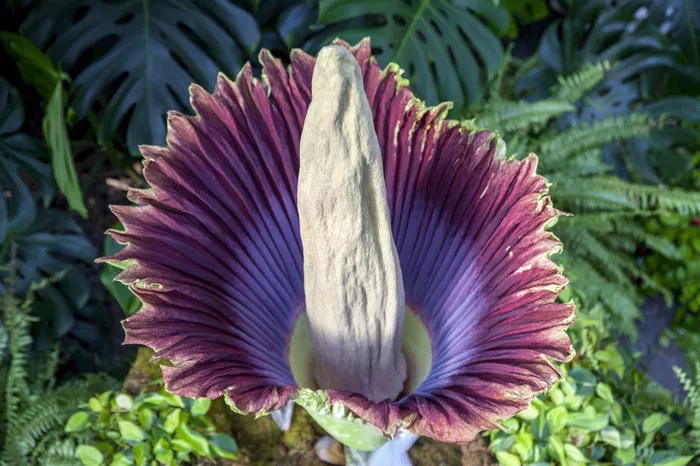A rare botanical event is on the horizon at the Como Park Conservatory in Minnesota, promising an olfactory experience that might not be for the faint-hearted.
Known as the corpse flower and affectionately dubbed “Horace” by Como officials, this peculiar plant is gearing up for its first bloom since its arrival in 2019 at the Marjorie McNeely Conservatory in St. Paul.
With an aroma akin to rotting flesh, the impending bloom of Horace is expected to draw both curiosity and wrinkled noses. Matt Reinartz, the marketing and public relations manager at Como, emphasized the rarity of the sight coupled with the even rarer scent, likening it to a blend of decay and intrigue.
For those brave enough to witness the spectacle firsthand, the conservatory’s Exhibit Gallery will be open daily from 10:00 a.m. to 6:00 p.m.
Alternatively, a livestream has been set up for enthusiasts who prefer to observe from a safe distance. This digital option allows viewers to witness Horace’s unfurling bloom and catch a whiff of its distinctive aroma without risking a sensory assault.
The conservatory’s website predicts a blooming extravaganza by May 19th, though the unpredictable nature of these plants adds an element of suspense.
The corpse flower, scientifically known as amorphophallus titanum, is notorious for its lengthy blooming process, which can take anywhere from four to 10 years. However, the spectacle is short-lived, lasting a mere 24 to 48 hours.
During its brief flowering period, the corpse flower generates heat and emits its characteristic odor to attract pollinators such as flesh flies and carrion beetles. The fertilized flowers eventually give way to bright red to orange fruits, with the plant eventually entering a dormant phase.
While native to the rainforests of Sumatra, the corpse flower has found its way into botanical gardens worldwide, captivating audiences with its grotesque allure.
For botany enthusiasts, this unique event offers a rare opportunity to witness the wonders of nature and underscores the importance of conservation efforts. Reinartz expressed hopes that the event would raise awareness about the preservation of endangered species and their habitats.


